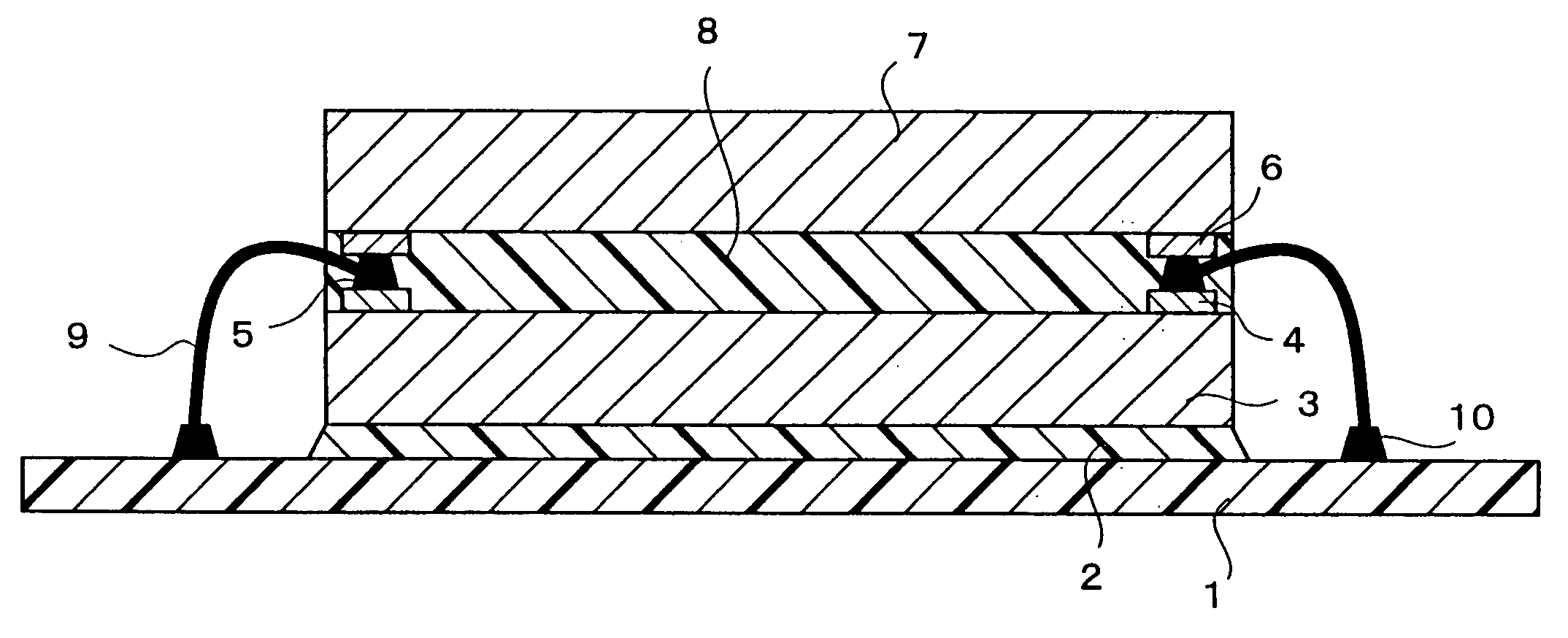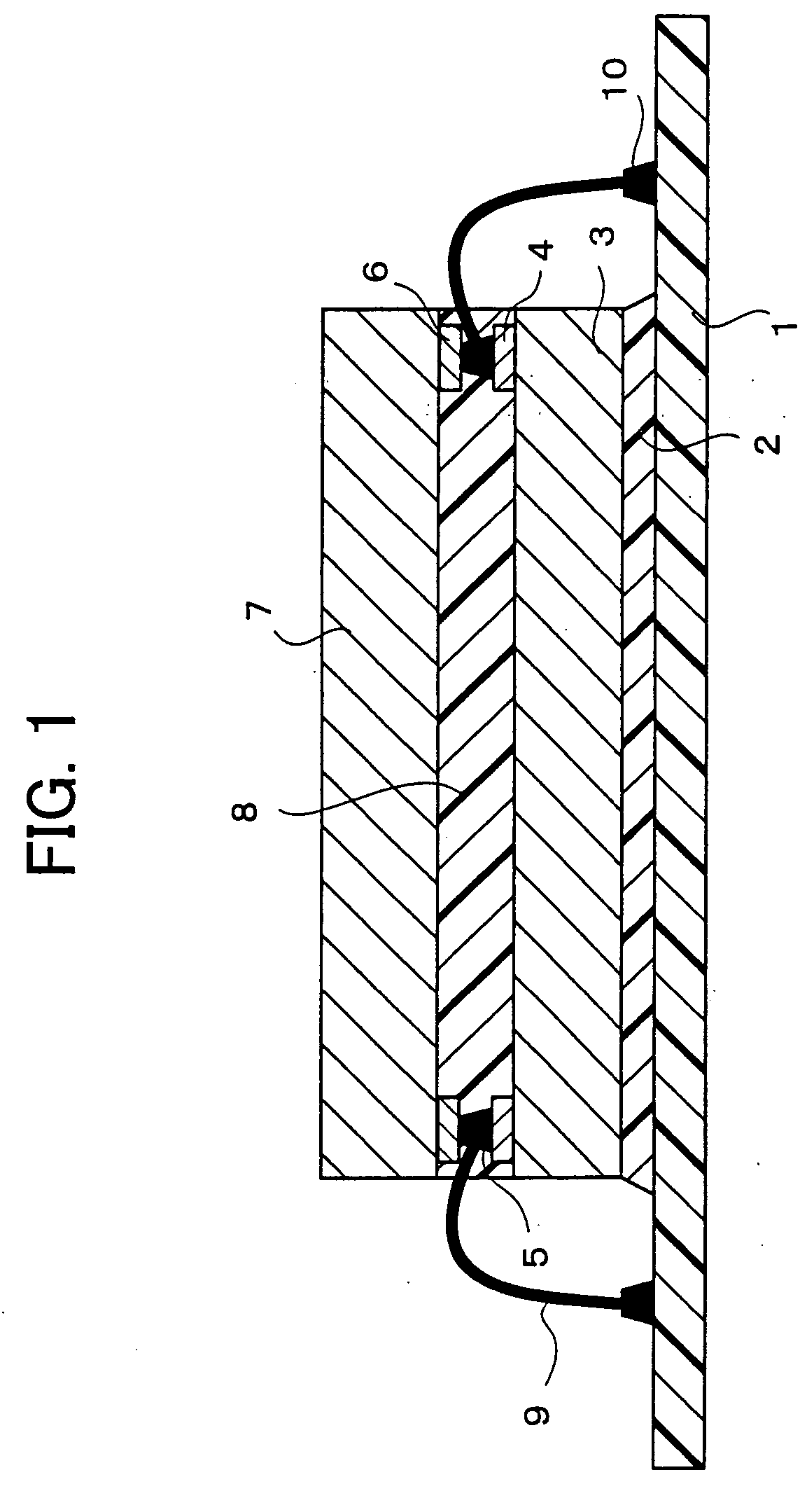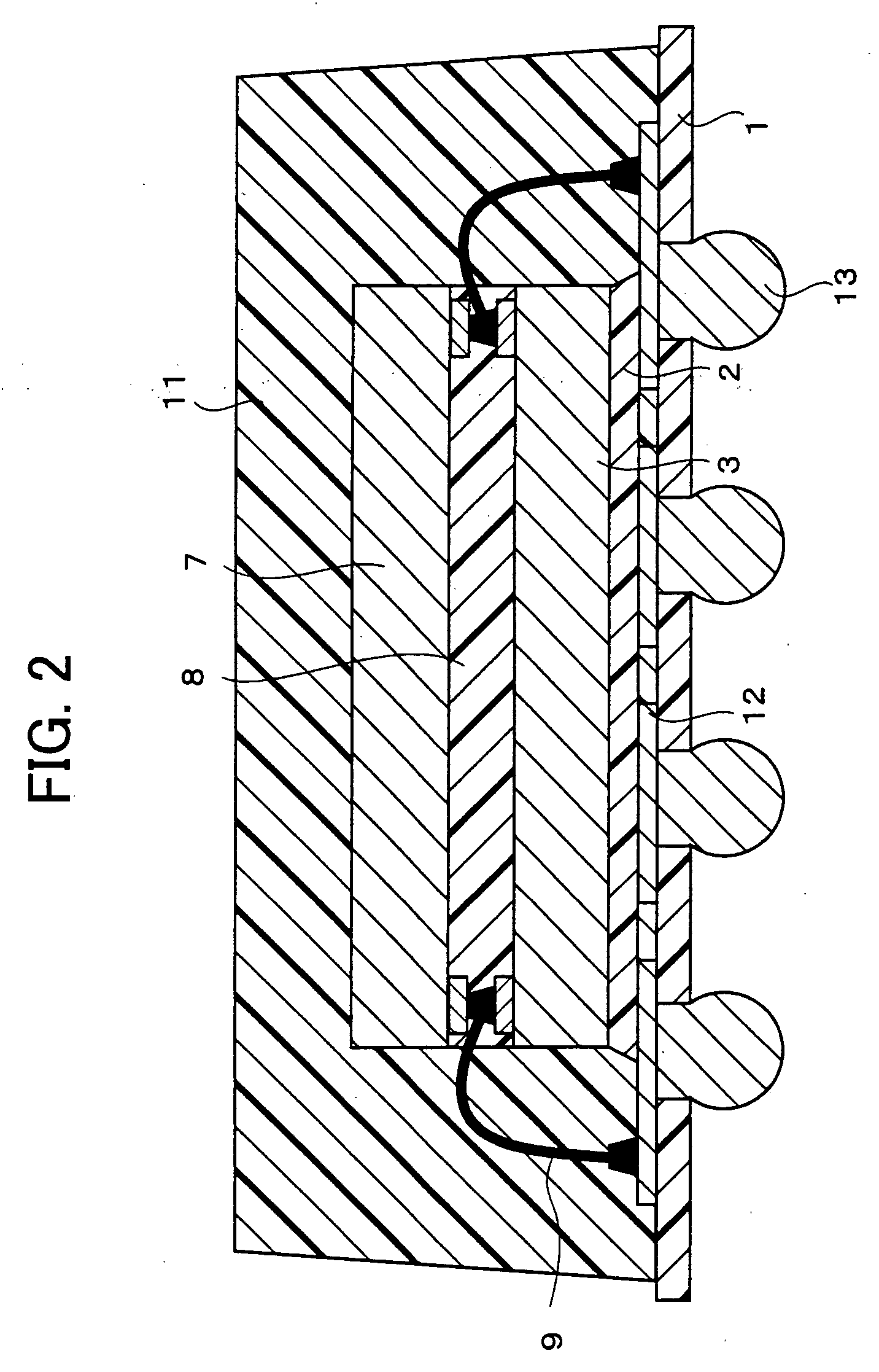Semiconductor device and method of stacking semiconductor chips
- Summary
- Abstract
- Description
- Claims
- Application Information
AI Technical Summary
Benefits of technology
Problems solved by technology
Method used
Image
Examples
embodiment 1
[0054] The following will describe an embodiment of the present invention in reference to FIGS. 1-3.
[0055] The semiconductor device of the present embodiment is a semiconductor device in which two or more semiconductor chips are stacked. Electrical contact pads are provided to both a first semiconductor chip and a second semiconductor chip at such positions that they form a mirror image on the first and second semiconductor chips, so those on the first semiconductor chip are located opposite to those on the second semiconductor chip when the first and second semiconductor chips are placed opposite to each other.
[0056] The method of stacking semiconductor chip of the present embodiment includes the steps of: placing the first and second semiconductor chips so that they are opposite to each other, the first and second semiconductor chips having electrical contact pads at such positions that they form a mirror image on the first and second semiconductor chips; and coupling the electr...
embodiment 2
[0097] Referring to FIGS. 4, 5, the following will describe another embodiment of the present invention. Here, for convenience, members of the present embodiment that have the same arrangement and function as members (arrangement) shown in figures of embodiment 1, and that are mentioned in that embodiment are indicated by the same reference numerals and description thereof is omitted.
[0098] In the semiconductor device of the present embodiment, as shown in FIGS. 4, 5, a third chip (third semiconductor chip) 16 is stacked on a second chip 7 with an adhesion layer 15 interposed between them and has thereon third pads 17 which are electrically connected to the substrate 1. The third chip 16 has third pads (electrical contact pads) 17 on which are there formed bumps 18. The third pads 17 are connected by wires 19 to wire bonding terminals 20 on patterned wiring (not shown) on the substrate 1.
[0099] The third chip16 may be of the same type as or of a different type from the first chip ...
embodiment 3
[0106] Referring to FIGS. 6, 7, the following will describe another embodiment of the present invention. Here, for convenience, members of the present embodiment that have the same arrangement and function as members (arrangement) shown in figures of embodiments 1, 2 and that are mentioned in that embodiment are indicated by the same reference numerals and description thereof is omitted.
[0107] In the semiconductor device of the present embodiment, as shown in FIG. 6 and FIG. 7, a fourth chip (fourth semiconductor chip) 22 is stacked on a third chip 16 like mirror images. The third pads 17 on the third chip 16 form a mirror image of and connected to fourth pads 21 on the fourth chip 22 via bumps 18. Hence, an identical signal is supplied to the third pad 17 and the fourth pad 21 connected thereto. An interlayer adhesion layer 23 is formed between the third chip 16 and the fourth chip 22. The semiconductor device of the present embodiment is otherwise arranged in the same manner as (...
PUM
 Login to View More
Login to View More Abstract
Description
Claims
Application Information
 Login to View More
Login to View More - R&D
- Intellectual Property
- Life Sciences
- Materials
- Tech Scout
- Unparalleled Data Quality
- Higher Quality Content
- 60% Fewer Hallucinations
Browse by: Latest US Patents, China's latest patents, Technical Efficacy Thesaurus, Application Domain, Technology Topic, Popular Technical Reports.
© 2025 PatSnap. All rights reserved.Legal|Privacy policy|Modern Slavery Act Transparency Statement|Sitemap|About US| Contact US: help@patsnap.com



